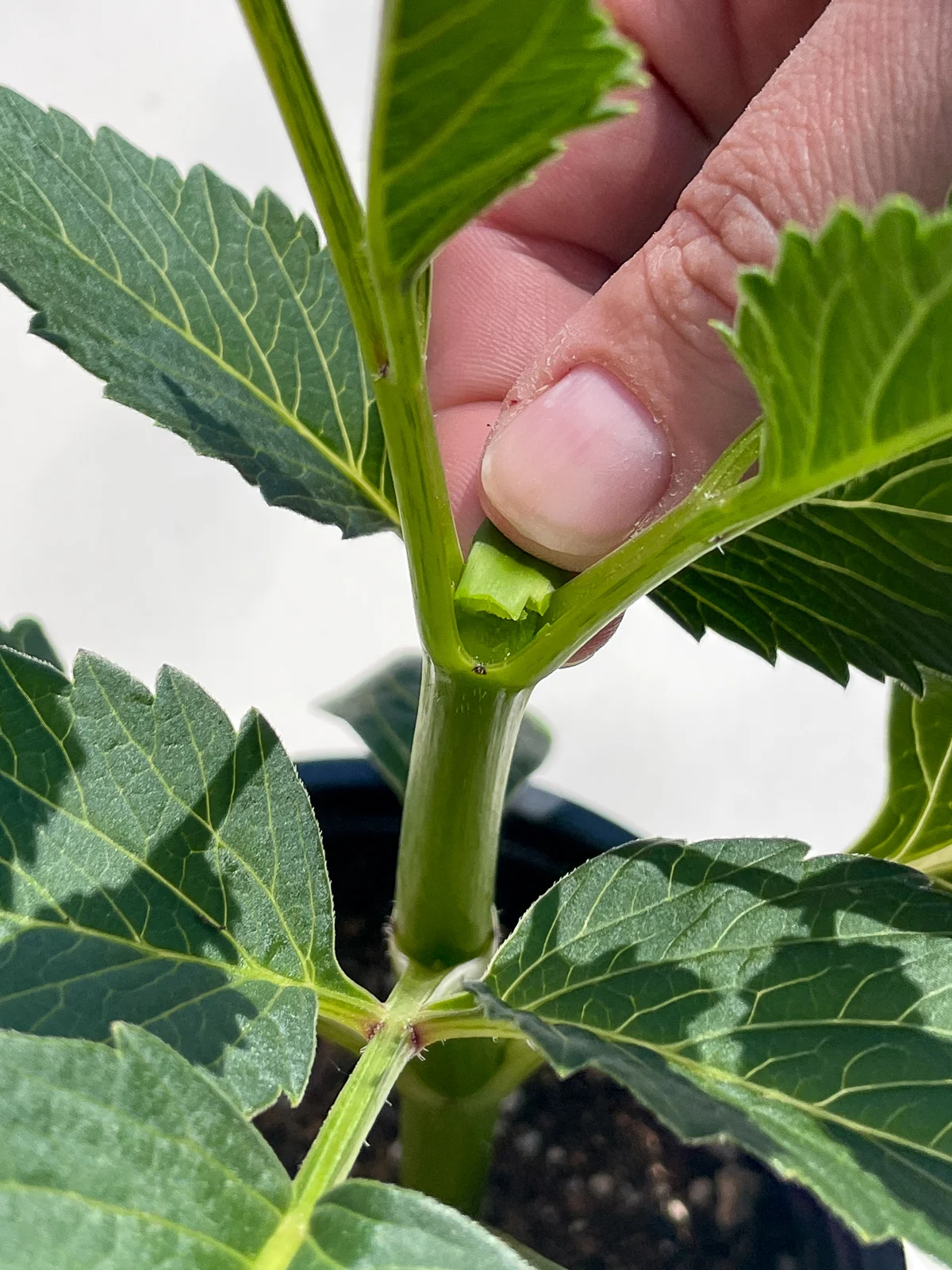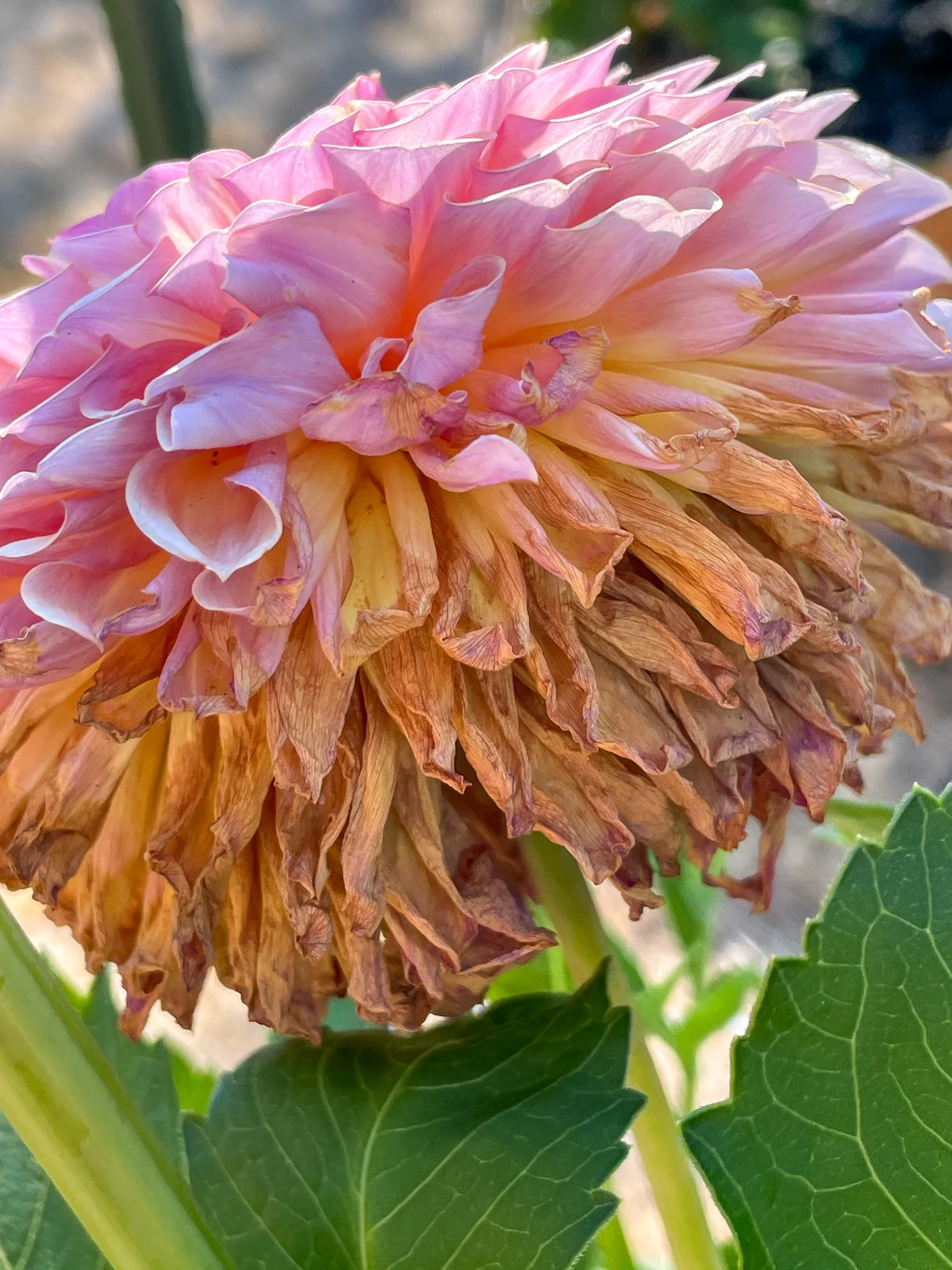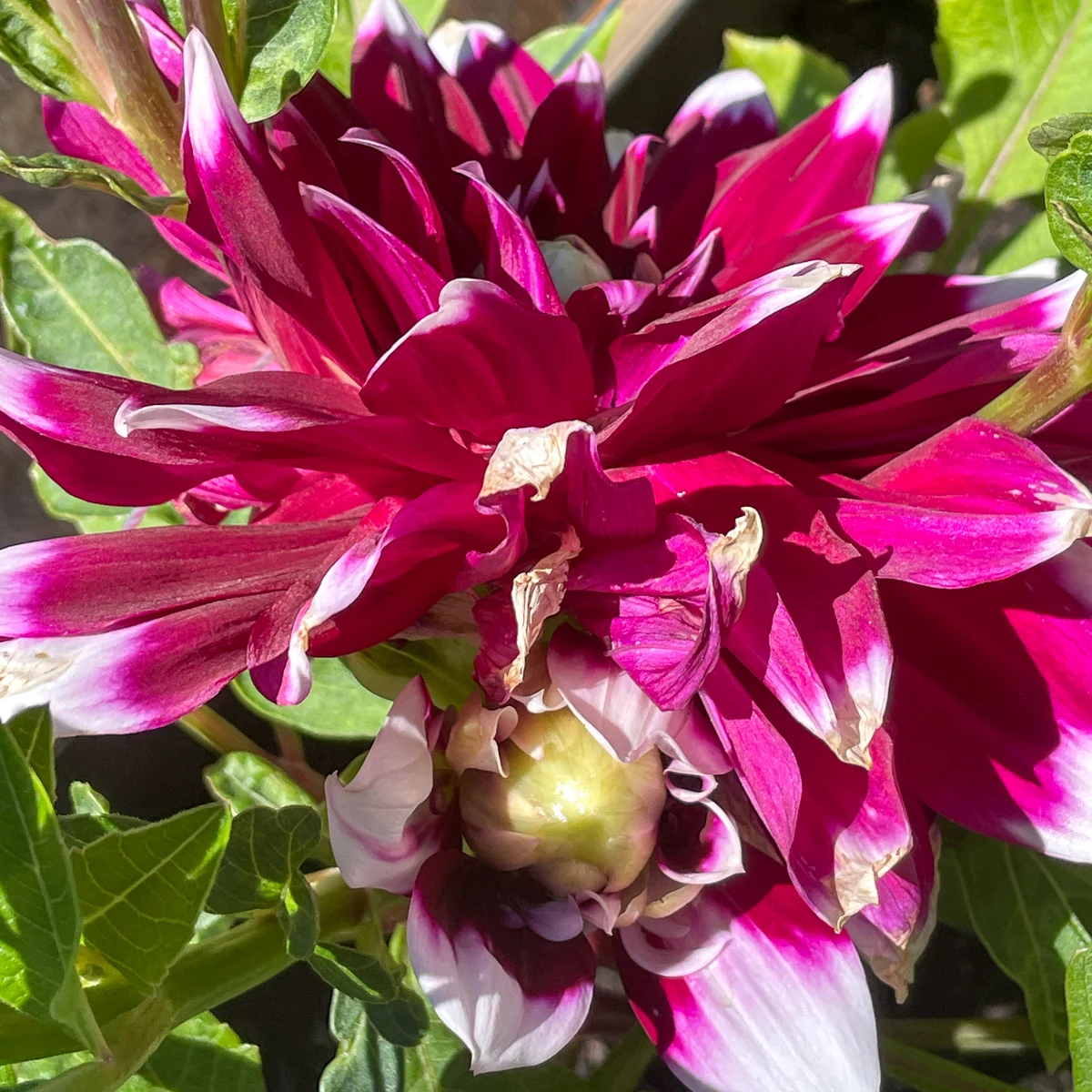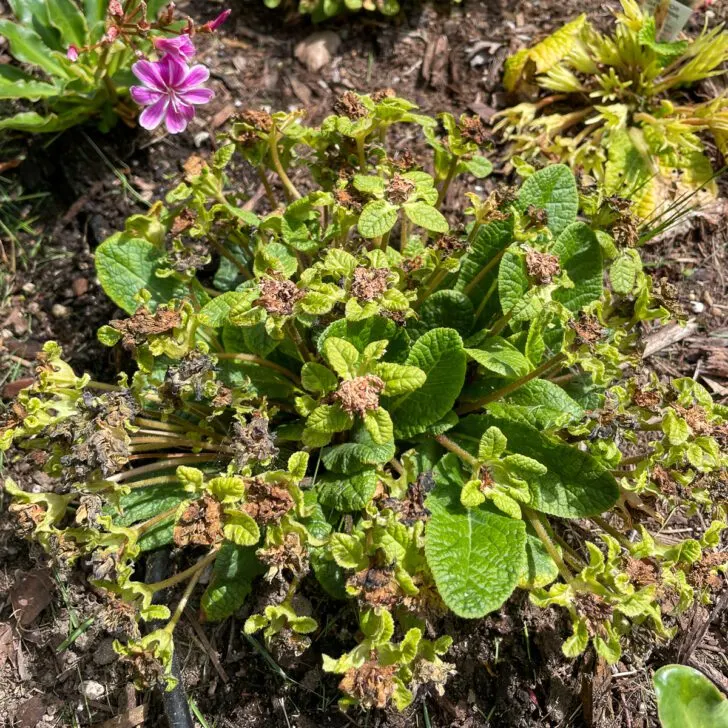Keep your dahlias blooming longer by removing the spent flowers. I'll show you how to deadhead dahlias so your plant produces more buds!

Dahlias are one of my favorite flowers to grow. Nothing else pumps out so many huge blooms over such a long period of time!
I have over 50 dahlia varieties in the raised beds in front of our house, and it's amazing to see all the different colors and shapes. (Ignore the dead grass...we're in a drought and I'm saving my water for the flowers!)

But these plants also require a lot of effort! They won't survive the winter in most areas of the country, so you have to dig up the tubers and store them in a cool, dry spot until spring.

I divide and sort the tubers from the previous year before presprouting them in spring.

Once they start putting on some size, I pinch the stems to encourage more branching.

Then after planting them outside when the weather warms up, you still need to wait months for your first blooms. Check out this article if you're wondering why your dahlias aren't blooming when they should!

With all that work, I want to enjoy my flowers for as long as possible! That's why I spend a few minutes every week deadheading dahlias.
Deadheading is the practice of removing spent flowers from a plant, and when it comes to dahlias, it's more than just a cosmetic touch-up.
This process is crucial for dahlias as it encourages more blooms, helps the plant focus its energy on new growth, and keeps it looking fresh and vibrant.
Here's how I do it!
This post contains affiliate links for your convenience. Purchases made through these links may earn me a small commission at no additional cost to you.
When to deadhead dahlias
Knowing when to deadhead dahlias is equally as important as knowing how. You'll encounter two different stages of spent blooms, depending on how often you get out to the garden with your pruning shears.
What to look for
The first sign that a dahlia flower is past its prime is when it starts to open up and show pollen in the center. Also look for flowers that are turning brown at the back of the flower head. These are the ones ready to be removed, even if they're still showing some color.

Large dahlia flowers may look nice from the front, but the back petals will start to curl up and turn brown after a week or so in the sun. You may also start to notice a pile of fallen petals on the ground below the plant.

If there are more buds forming on the same stem, I'll typically cut the older bloom off as soon as I see the back petals starting to fade. Then you can pluck off the brown bits and stick it in a vase for a few more days of enjoyment inside!
How to tell the difference between a seed pod and a new bud
If you went weeks without deadheading your dahlias, they may have shed all their petals already. Instead of a shriveled ball of brown that's obviously past its peak, they can look like new buds! So how do you know which ones to cut?
The two examples below were on the same plant, which makes it really easy to see the difference.
New buds will be round around the outside with a flatter end. Sometimes you can see a tiny peek of color in the center.

Seed pods are more conical in shape, and can be mushy and brown. If it comes to a point like the one shown below, cut it off! This will tell the plant that it failed to make seeds, so it should try again with more flowers.

At the end of the growing season, you may want to leave a few pods on the plant to harvest dahlia seeds. Keep in mind that dahlias grown from seed won't stay true to the parent plant, and can be a totally different color and shape.
I always grow a small patch of dahlia seedlings just to see what surprises I get! Usually I end up with mostly single varieties and a few collarette dahlias, and I'll only keep a few of my favorites for next year. Who knows, maybe you'll discover the next award winning dahlia!

Where to make the cut
Once you've identified which dahlia stems to deadhead, where do you make the cut?
DON'T just chop off the flower and leave the stem behind! Not only does this look silly, but the leftover stem can become a host to pests or disease.

Dahlia stems are hollow, especially higher up on the plant. If you cut just below the bloom, there's a chance you're exposing a cavity inside for insects to crawl into!
Instead, follow the flower stem back to a junction where it meets the main stalk. If this is the first bloom, it will typically be in the center of three stems.

Use sharp, clean pruning shears to cut the stem just above the junction. I like to use extra-long, thin snips so I can get in close without damaging the neighboring stems.

Sometimes the first flower on a plant has a really short stem, and it crowds out the new blooms. This can be prevented by disbudding your dahlias. In this case, I'll cut off the first one early so the next one has more space.

As the growing season progresses, you might need to deadhead a stem that has already been cut once before. If there's no new buds on that stem, cut back to the next junction.

Keep up with deadheading your dahlias and you'll be rewarded with more beautiful flowers than you can imagine!

Check out these other pruning tutorials!




